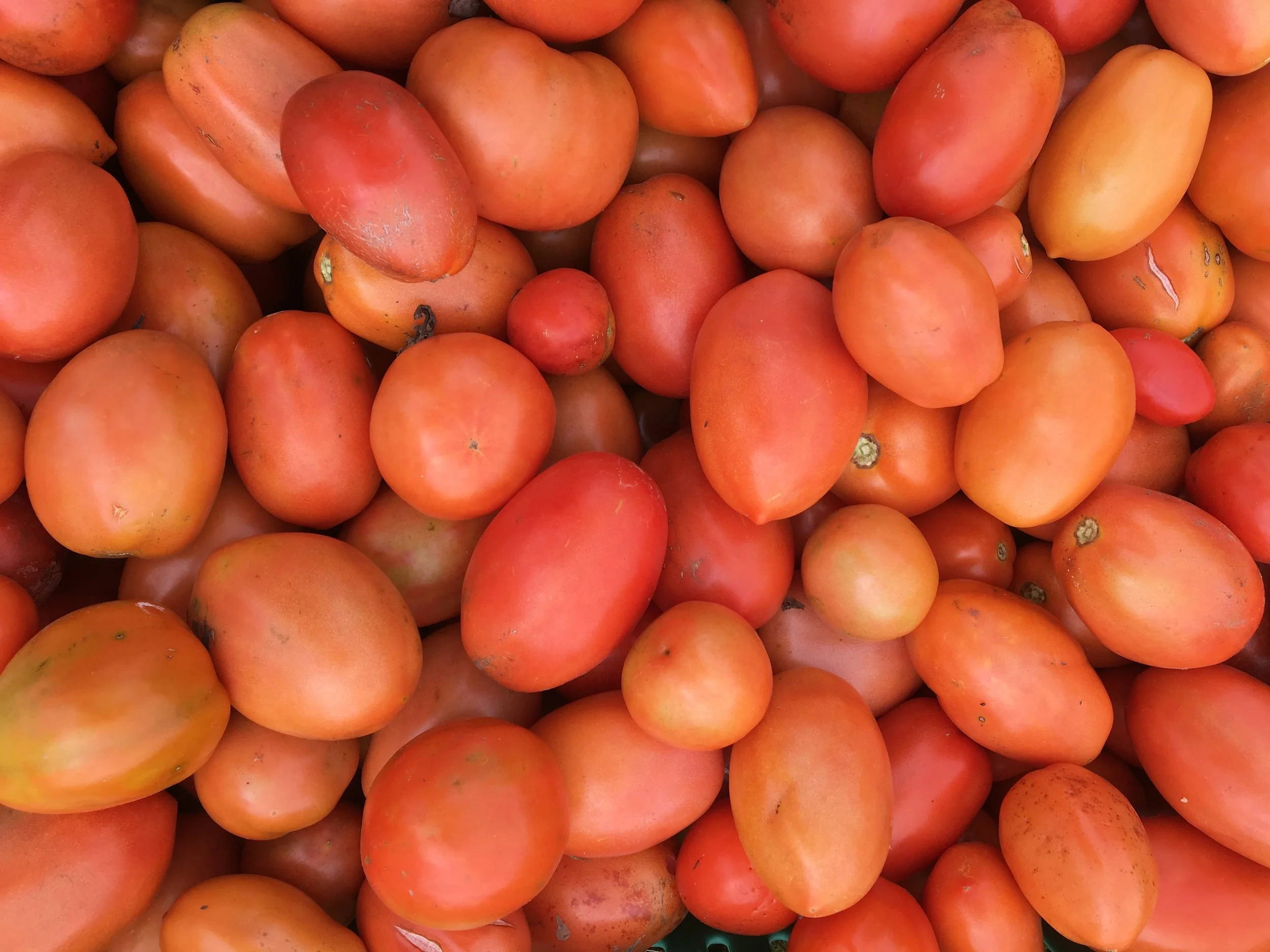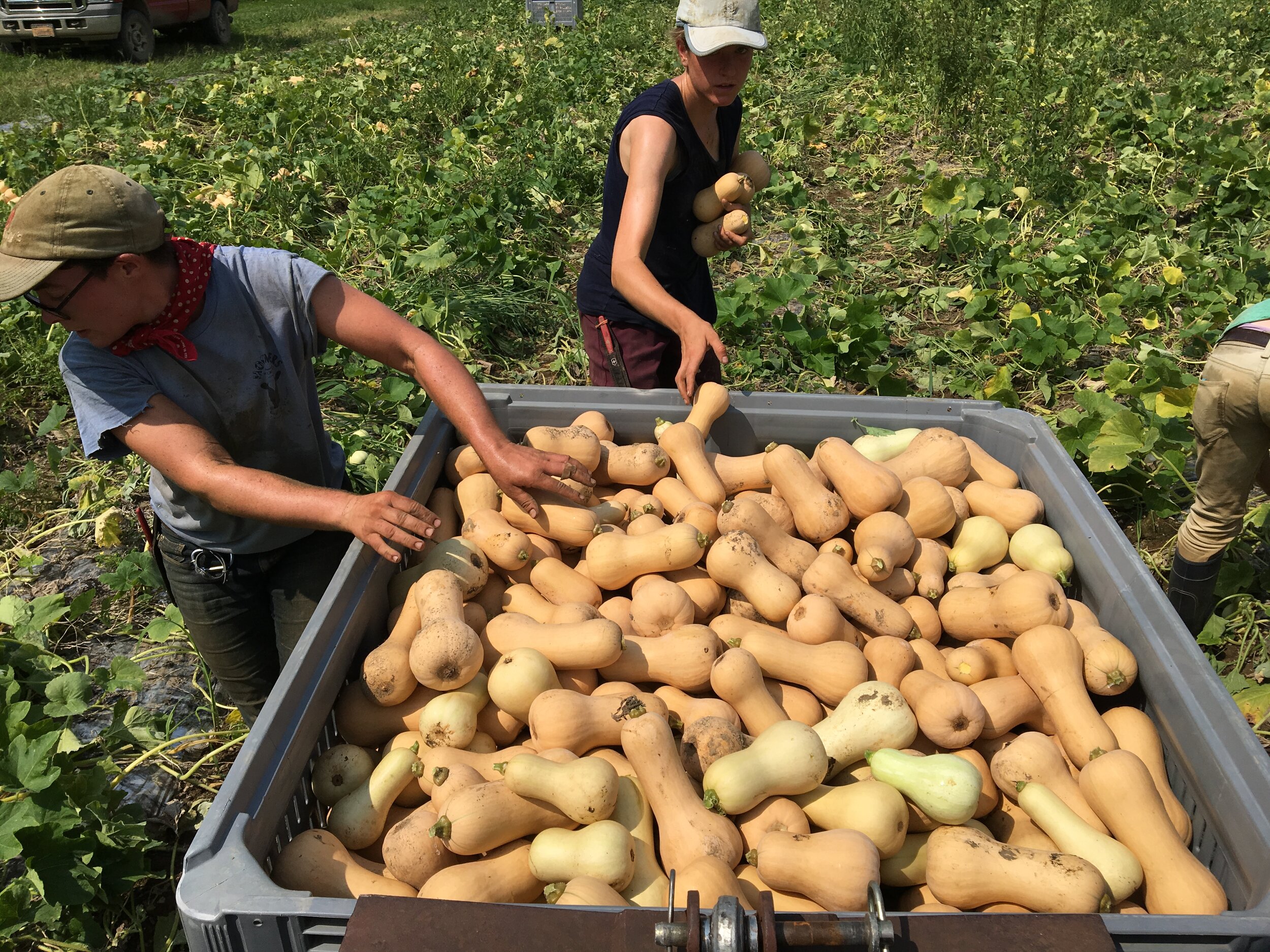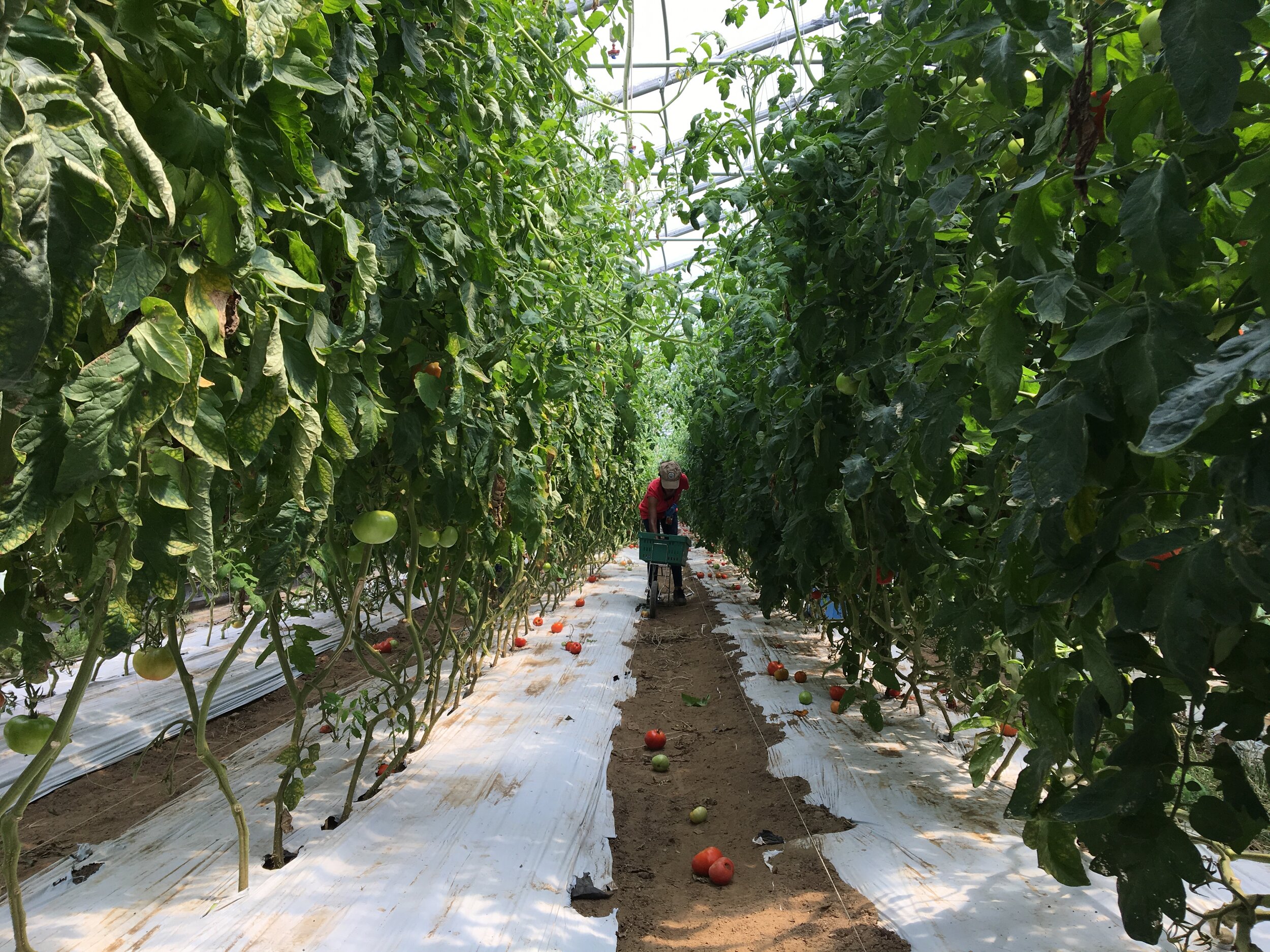It’s October on the farm! Which means: CSA distributions are bountiful in butternut, Fruit share members are enjoying apples and pears and grapes, cabbages are making a comeback, purple daikon are doubling in size, and we’re planting greens that we’ll be harvesting… in 2020?
Yes: We’re talking about our high-tunnel greens! While the long days of summer fast-forward the maturation process of our main-season plants, it can be two months (or more!) from transplant to harvest for our fall-planted, winter-harvested lettuces, kales, and bok choy.
In the lessening light of autumn, plants grow much more slowly. Eventually, when daylight dwindles to fewer than 10 hours per day, they stop really “growing” all together. During this time, plants do… well, what a lot of us do during the winter. They sit tight, and they wait for warmer weather.
What that means for us farmers is that we need to get these plants in NOW, so they can put on growth before this “Persephone period” of low-light hibernation sets in. Each day we delay makes a difference. Too many days can mean the difference between having a bountiful winter harvest, or barely having enough for our Winter CSA.
This is a big project. It entails turning a high tunnel that is stuffed to the gills with sixteen thousand, ten-foot-high tomato plants into a cavernous open space; a blank canvass with lofted, rich soil ready to receive plugs of lettuce the size of your thumb. In addition to removing all of the crop material, we must also prep the soil: we aerate it, amend it with supplemental nutrients, incorporate them, and rake it flat for seeding or transplanting.
One of the most important tools we use in preparing the soil is called a broadfork. This tool is a tall, u-shaped bar with flat metal forks coming out of the bottom. It lets us use our body weight to help sink the tines into the earth. Pulling back on the handles creates cracks in the soil, which help to break up compaction and allow nutrients, water and air to more easily penetrate to lower horizons. (Oxygen is, in fact, a key component of soil. Without it, the microorganisms that break down and recycle organic matter, making it available for plant uptake, would be unable to do their important job.) The broadfork does all this without mixing the top layers of the soil, meaning it is less disruptive to the existing soil structure and communities of earthworms and specifically-situated microbial communities there.
As soil farmers, the broadfork is a key tool that allows us to improves soil structure with minimal disruption. Also: it’s ergonomically efficient and fun to use!
Aside from tunnel prep and planting, other big projects this month will include harvesting and storing winter crops such as potatoes, purple-top turnips, watermelon radishes, leeks and red and gold beets; harvesting and curing sweet potatoes; and cover-cropping our fields.
Stay tuned next month for more photos of the harvest!





